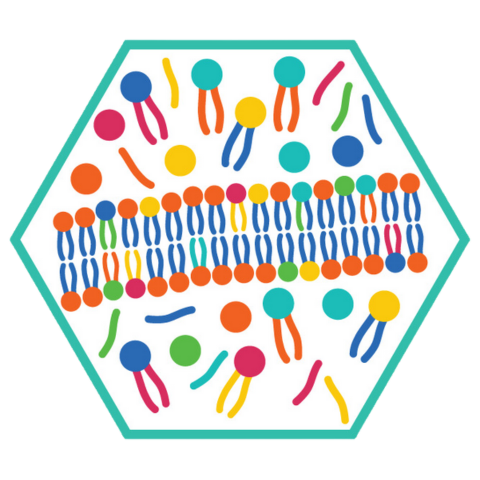
Lipids hold it all together
Arguably, life on this planet began in earnest with the appearance of lipid-like molecules that could encapsulate and concentrate the critical biochemical reactions that formed a primordial cell. This property of lipids to self-associate into the membranes that compartmentalize a cell and its organelles is indeed essential, but it’s just one aspect of the many and varied roles played by these versatile molecules. In addition to structural roles, lipids are integrated into signaling pathways that control such activities as cell survival, differentiation, motility and immune responses.
Submit an abstract
Abstract submission begins Sept. 14. If you submit by Oct. 12, you'll get a decision by Nov. 1. The regular submission deadline is Nov. 30. See the categories.
The eclectic functions of lipids are due to their structural diversity built into a common framework, resulting in hundreds of distinct species. It is the metabolism of lipids, their biosynthesis and degradation, that ultimately creates this diversity.
Our symposium at Discover BMB will highlight recent advances in lipid metabolism by exploring where and how lipids are made in cells, their contributions to cell survival and the impact of lipid diversity on cell and membrane function.
Keywords: Ferroptosis, lipid droplets, lipidomics, mitochondria, nucleus, plasma membrane.
Who should attend: The session will be attractive to those wanting an initiation to the field of lipid metabolism as well as those with a focused interest in specific topics.
Theme song: “Fat Dance” by the Red Hot Chili Peppers, in appreciation of greasy molecules everywhere.
The session is powered by the seemingly endless and unexpected biological functions of lipids.
Lipid metabolism
Cellular topology of lipid metabolism

Neale Ridgway, Dalhousie University
Miriam Greenburg, Wayne State University
Greg Fairn, Dalhousie University
Shirin Bahmanyar, Yale University
Lipid quality control in cell survival and death
James Olzmann, University of California, Berkeley
G. Ekin Atilla–Gokcumen, University at Buffalo, the State University of New York
Toni Petan, Jozef Stefan Institute
Maria Fedorova, Technical University Dresden
Spatial lipidomics — tracing lipids in cells at the molecular level
Theodore Alexandrov, European Molecular Biology Laboratory
Kandice Levental, University of Virginia
Arun Radhakrishnan, University of Texas Southwestern Medical Center
Enjoy reading ASBMB Today?
Become a member to receive the print edition four times a year and the digital edition monthly.
Learn moreGet the latest from ASBMB Today
Enter your email address, and we’ll send you a weekly email with recent articles, interviews and more.
Latest in Science
Science highlights or most popular articles

Bacteriophage protein could make queso fresco safer
Researchers characterized the structure and function of PlyP100, a bacteriophage protein that shows promise as a food-safe antimicrobial for preventing Listeria monocytogenes growth in fresh cheeses.

Building the blueprint to block HIV
Wesley Sundquist will present his work on the HIV capsid and revolutionary drug, Lenacapavir, at the ASBMB Annual Meeting, March 7–10, in Maryland.

Gut microbes hijack cancer pathway in high-fat diets
Researchers at the Feinstein Institutes for Medical Research found that a high-fat diet increases ammonia-producing bacteria in the gut microbiome of mice, which in turn disrupts TGF-β signaling and promotes colorectal cancer.

Mapping fentanyl’s cellular footprint
Using a new imaging method, researchers at State University of New York at Buffalo traced fentanyl’s effects inside brain immune cells, revealing how the drug alters lipid droplets, pointing to new paths for addiction diagnostics.

Designing life’s building blocks with AI
Tanja Kortemme, a professor at the University of California, San Francisco, will discuss her research using computational biology to engineer proteins at the 2026 ASBMB Annual Meeting.

Cholesterol as a novel biomarker for Fragile X syndrome
Researchers in Quebec identified lower levels of a brain cholesterol metabolite, 24-hydroxycholesterol, in patients with fragile X syndrome, a finding that could provide a simple blood-based biomarker for understanding and managing the condition.


